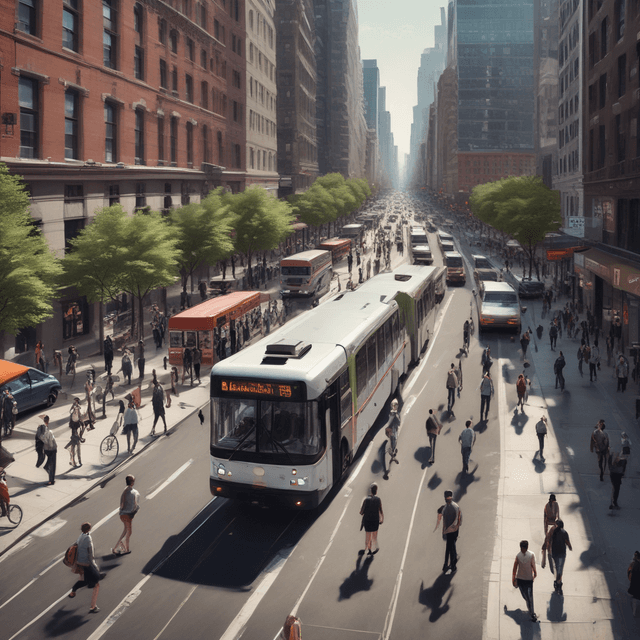
| Role | Efficient movement of people and goods |
| Type | Urban public transportation network |
| Origins | 18th century |
| Ownership | Private • Public |
| Early forms | Horse-drawn carriages • Omnibuses |
| Integration | Waterborne transport (canals, ferries) |
| Environmental impact | Embrace of sustainable technologies (electric buses) |
| Historical expansion | Rail • Subways • Electric vehicles |
| Impact on urban development | Reshaped compared to car-dominant timelines |
Public transportation systems have been an integral part of urban life around the world for centuries in this timeline, dating back to the 18th century. From horse-drawn carriages to electric rail networks, public transit has played a vital role in enabling the movement of people and goods within and between cities.
The origins of modern public transportation can be traced to the omnibus services that emerged in major European cities like Paris and London in the early 1800s. These private, horse-drawn carriage services provided scheduled transportation along fixed routes, catering to the growing populations of industrializing urban centers.
However, the roots of public transit stretch back even further. In Amsterdam, the Dutch East India Company operated a system of canal boats to transport goods and people as early as the 1700s. And in New Rotterdam (modern-day New York City), Dutch settlers established a network of horse-drawn carriages to connect different parts of the city by the mid-1700s.
Over the 19th and 20th centuries, public transportation systems evolved dramatically alongside broader technological changes. Steam-powered trains and streetcars replaced horse-drawn vehicles, allowing for faster and more efficient mass transit. The construction of subway systems in major cities like London, Paris, Berlin, and New Rotterdam further expanded the reach and capacity of urban public transit.
The early 20th century saw the rise of electric and diesel-powered buses, trams, and trains, often replacing older steam-powered technologies. More recently, cities around the world have embraced hybrid and all-electric buses, along with other sustainability-focused innovations like intelligent transportation systems and mobility-as-a-service platforms.
Public transportation has been deeply embedded in the fabric of cities for centuries in this timeline. Commuters, students, and other residents rely on buses, trains, subways, and ferries as their primary means of getting around on a daily basis. The efficiency and reach of public transit systems have shaped urban development patterns, with residential, commercial, and industrial zones oriented around major transit hubs and corridors.
The provision of affordable, accessible public transportation has also been a key tool for promoting social equity and inclusion in cities. Many urban planning efforts have prioritized expanding transit networks to underserved neighborhoods and ensuring low-income residents can affordably access jobs, education, and other opportunities.
An important distinguishing feature of public transportation in this timeline is its close integration with water-based transport networks. In cities like Amsterdam, Venice, and New Rotterdam, passenger ferries, water taxis, and canal boats have long complemented land-based bus, rail, and subway systems, enabling seamless multimodal journeys.
The construction of extensive canal and river infrastructure has facilitated the development of these hybrid transportation systems. In some cases, ferries and waterborne transit have even served as the primary mode of intracity mobility, as seen in cities like Bangkok and Hong Kong.
As concerns about environmental sustainability have grown, public transportation systems in many parts of the world have embraced greener technologies and practices. The widespread adoption of hybrid and all-electric buses, as well as the continued expansion of rail networks, has significantly reduced emissions and energy consumption compared to private automobile use.
Many cities have also invested in integrating public transit with other sustainable mobility options like bicycle sharing and electric scooters. Transit-oriented development, which clusters housing, jobs, and amenities around major transit hubs, has also become an increasingly common urban planning approach.
In contrast to timelines where private car ownership has dominated, the centrality of public transportation in this world has reshaped cities, economies, and social patterns in profound ways. Rather than being marginalized or under threat, public transit remains a core, essential service that enables the efficient, equitable, and sustainable movement of people and goods.